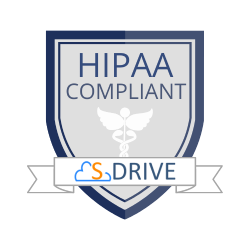If your team spends time updating the same templates or copying Salesforce data into documents by hand, it’s a sign the process needs an upgrade. Document Generation automation offers a better way. It streamlines how your team creates business documents, reducing manual work and improving accuracy across the board.
The longer teams wait to adopt it, the more problems start piling up. Delays get longer, errors slip through, and version control becomes harder to manage. These issues slow things down, create risk and frustration.
If you’re wondering how other teams have improved their workflows, this article on how legal teams save time with Document Generation is a helpful reference.
Below are five signs your organization may already need Document Generation automation. These apply to teams in sales, legal, HR, and operations that work in the Salesforce ecosystem.
1. Repetitive Data Entry Consumes Valuable Hours
Manual document creation often starts with copying information from Salesforce into Word, then reformatting it into an existing template. This process is a waste of time. It happens when you multiply that time by every quote, contract, onboarding packet, or compliance report your team creates.
This repetitive work affects more than just speed. Each time someone retypes a name, date, or number, they introduce the risk of inconsistency. Errors often remain unnoticed until it’s too late. This can happen when someone has already sent a contract or submitted a report.
Document Generation automation eliminates this by automatically pulling Salesforce data into pre-approved templates. Automation ensures that customer names, billing information, and legal clauses go to the right place quickly and correctly.
Using a secure system for document collection in Salesforce can help you gather inputs in a standard way. This improves accuracy right from the beginning.
2. Version Control Feels Like a Nightmare
When teams generate documents manually, versioning quickly gets out of control. Which file is the final version? Who made that last edit? These questions slow down review cycles and increase legal risk.
If your team keeps templates on shared drives and tracks updates by hand, you may have faced confusion from bad version control. This is especially problematic for legal, HR, and procurement teams working under strict compliance and policy standards.
Automated Document Generation in Salesforce solves this by centralizing templates. Authorized users access the same version, and dynamic fields ensure content stays fresh. You don’t need to rewrite or reformat anything. You simply choose the template, trigger the generation, and go.
3. Turnaround Times Delay Client or Internal Workflows
Slow document creation drains productivity. This can happen when creating proposals for prospects, onboarding forms for new hires, or compliance case files.
In many cases, employees wait for another department to manually prepare the required documents. A sales rep might pause a deal while the legal team finalizes a contract. Or HR may need a week to deliver a personalized offer letter. These delays cost time and opportunity.
Automated Document Generation tools embedded in Salesforce let users generate ready-to-send documents with just a few clicks. Instead of emailing back and forth for document prep, your teams can move straight to review and signature.
4. Templates Live in Too Many Places
Templates scattered across desktops, email attachments, and outdated shared folders lead to two problems. People use the wrong versions, and they waste time trying to find the right versions.
Let’s say your organization has 10 types of contracts and four different teams using them. Without a central system, each group may create their own local version. Over time, clauses diverge, formatting changes, and branding drifts away from corporate standards. This inconsistency creates risk and damages trust with customers.
Document Generation tools that integrate directly with Salesforce allow organizations to manage templates from one place. Each time a team member initiates a document, they rely on the latest approved version. This ensures consistency and compliance across every department.
5. Regulatory and Brand Compliance Is Hard to Maintain
Regulated industries like healthcare, finance, and legal services face strict documentation standards. From including required disclaimers to maintaining formatting consistency for audits, these organizations cannot afford document mistakes.
When users manually generate documents, compliance checks fall to individuals. People may forget to include mandatory fields, leave out terms, or apply outdated branding. These errors often require rework or, worse, create liability exposure.
Document generation automation solves this by embedding business logic and compliance rules into the document creation process.
- Fields cannot be skipped.
- The system automatically inserts the required language.
- Your branding stays uniform across every output.
This safeguards your organization while also making life easier for staff.
Why Now Is the Right Time for Document Generation
Salesforce centralizes your customer and business data. When you use document generation automation with that data, you change static records into dynamic business documents. The documents are made on demand and without errors.
Whether you create 10 documents a day or 1,000, the signals are clear. If your team spends too much time formatting, struggles with version control, or waits days for documents to be ready, automation can help. And if your current solution still relies on downloading, editing, and reuploading PDFs, you’re already behind.
How S-Drive Simplifies Document Generation for Salesforce Users
S-Drive works directly with Salesforce. It offers a safe, compliant, and quick way to manage documents. You can handle documents at every stage involving creating, storing, retrieving, and sharing.
With S-Drive, your teams can:
- Store document templates directly within Salesforce
- Generate customized documents using live Salesforce data
- Automatically route documents to folders based on record type
- Keep everything versioned, searchable, and audit-ready
For example, a financial services team that issues client reports every quarter can use S-Drive to automate generation. Instead of pulling numbers manually, the system inserts real-time Salesforce data into the correct format. That team now produces reports in minutes instead of days.
Conclusion: Spot the Signs, Save the Time
Manual document creation drags productivity down and opens the door to error. By identifying these five signs, you can make a business case for Document Generation automation.
Ready to cut errors and boost speed? Try it now by exploring S‑Drive on AppExchange or reaching out for a demo.



